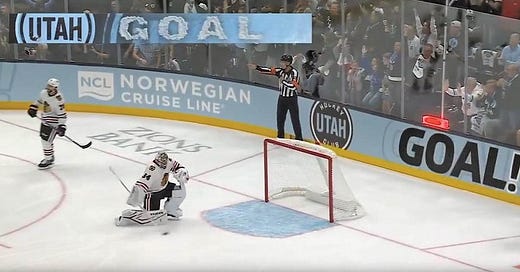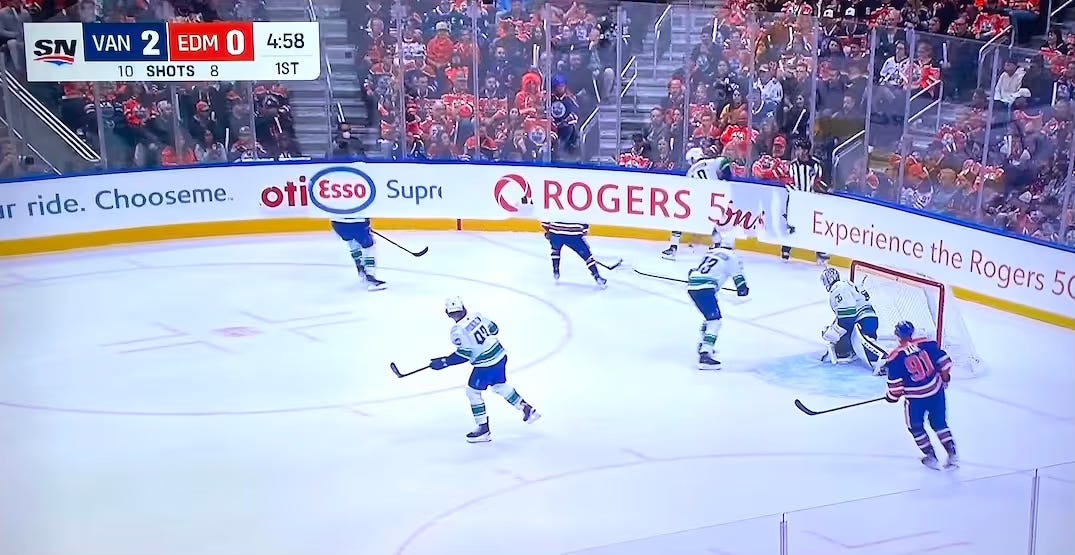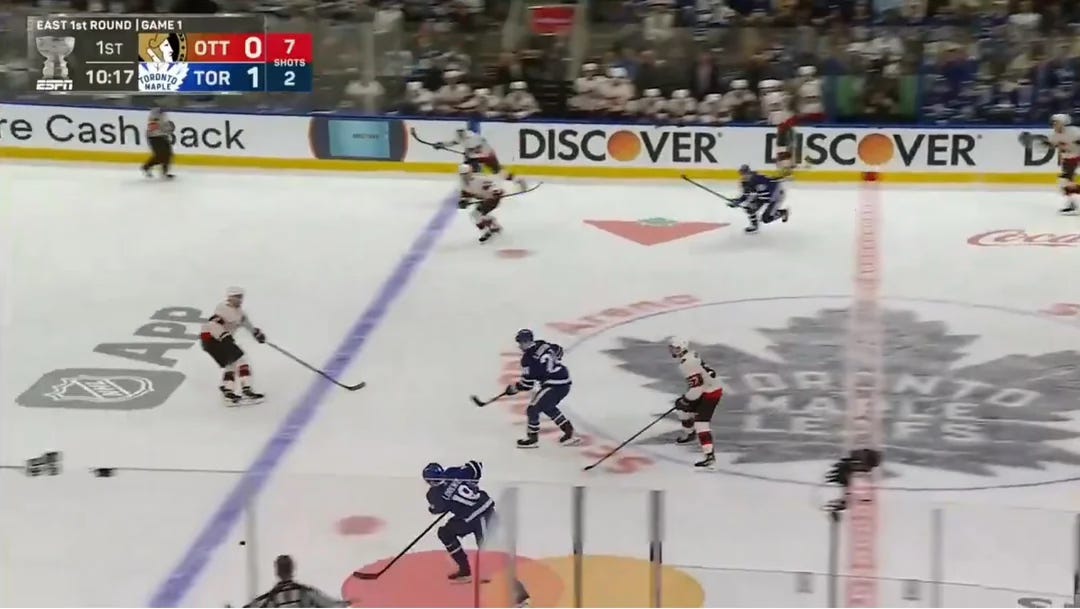The Boards Are Alive: How the NHL's Digital Dasherboards Became Broadcast MVPs
From glitchy overlays to seamless storytelling, the NHL's virtual rink ads are a masterclass in design evolution.
As the Stanley Cup Final faces off this week—with McDavid’s Oilers looking to end Canada's 32-year drought against the defending champion Florida Panthers—it’s not just the players that have levelled up. So have the boards themselves.
There was a time when watching an NHL game felt like navigating a glitchy video game. Players would skate past the boards, only to be momentarily consumed by a flickering ad for a [insert national corporation here]. It was distracting, disorienting, and frankly, a design disaster. The year was 2022.
Fast forward three years to the present, and the transformation is nothing short of remarkable. The NHL's digitally enhanced dasherboards (DEDs) have evolved into a seamless, dynamic component of the broadcast experience. They're not just ads; they've become part of the game's storytelling fabric.
From Disruption to Integration
Initially, the DEDs were met with skepticism—and for good reason. Early implementations were plagued with technical issues: ads would blur, overlap with players, or lag behind the action. Fans and broadcasters alike voiced their frustrations, prompting the NHL to revisit and refine the technology.
Enter Supponor, a British firm specializing in virtual advertising. Collaborating with the NHL, they introduced AI-supported technology capable of replacing physical in-arena ads with virtual ones in real-time. This advancement allowed for dynamic content that could adapt to different regions and broadcasts, enhancing both the viewer experience and advertising reach.
Designing for the Viewer
From a design perspective, the success of the current DEDs lies in their subtlety and integration. They're crafted to complement the game's aesthetics, not compete with them. The ads maintain consistent brightness and color schemes, ensuring they don't distract from the on-ice action. Moreover, the technology intelligently adjusts to camera angles and player movements, preserving the illusion of physical presence.
Dynamic Storytelling Elements
Beyond static advertisements, the DEDs have become a canvas for dynamic storytelling. Celebratory animations—like flashing "GOAL!" sequences or team-specific graphics—enhance the emotional impact of pivotal moments. These elements are not just visually appealing; they contribute to the narrative arc of the game, engaging viewers on a deeper level.
A Win for All Stakeholders
The refined DEDs represent a triumph for multiple stakeholders:
Advertisers gain flexible, targeted exposure across various markets.
Broadcasters benefit from enhanced visual storytelling tools.
The NHL capitalizes on increased revenue streams without compromising the viewing experience.
Fans enjoy a more immersive and engaging broadcast.
Looking Ahead
The evolution of the NHL's digital dasherboards exemplifies how thoughtful design and technological innovation can transform a once-flawed concept into a celebrated feature. It's a testament to the power of iterative design and the importance of aligning technological advancements with user experience.
At Orbit Studios, we understand how smart, subtle design can elevate an experience without distracting from it. The NHL's digital dasherboards—now gearing up for their biggest spotlight yet in the Stanley Cup Final—are proof that great design doesn’t scream. It blends in, enhances, and leaves a lasting impression. Let’s bring that same thinking to your next creative challenge.







